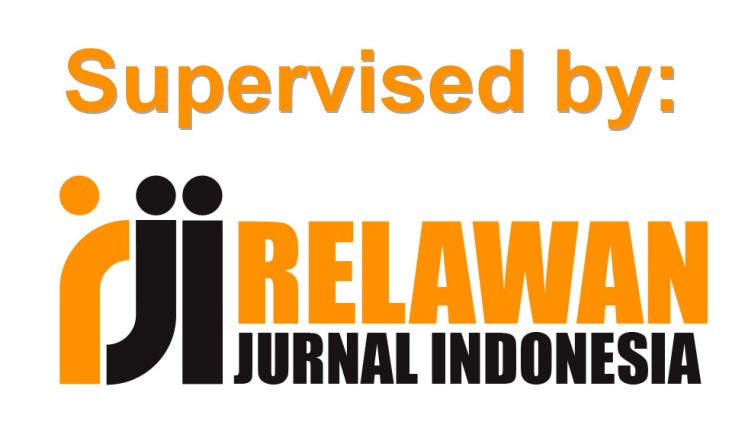Penerapan Fuzzy C-Means Dalam Penentuan Kelas Siswa di Sekolah Menengah Kejuruan
Abstract
The PLN industrial class is a class that collaborates with PT. PLN Persero by including a curriculum in accordance with the competencies required by the industry. Students entering industrial classes must also be selected students. Therefore we need a system to classify students. The grouping of students at SMK Muhammadiyah 3 Surakarta is still manual, so the grouping process is not optimal and accurate.The purpose of this thesis is the creation of a class grouping application based on productive academic and attitude values using the Fuzzy C-Means method. And make it easier to do class grouping. Data collection methods include observation or data collection at SMK Muhammadiyah 3 Surakarta, interviews with the Head of the electrical power installation engineering (TITL) Skills Competency and literature studies taken from journals, books and also related research.This class grouping system is created using the Fuzzy C-Means method. After grouping the results obtained from 26 students, 21 students entered the industrial class and 5 students entered the regular class. The results of the validity test prove that the clustering is valid, as evidenced by the silhouette coefficient test where the value is 0.81 which indicates a strong structure.
Keywords
Full Text:
PDFReferences
M. Ropianto dan others, Algoritma & Pemrograman. Deepublish, 2018.
H. Priyatman, F. Sajid, dan D. Haldivany, “Klasterisasi Menggunakan Algoritma K-Means Clustering untuk Memprediksi Waktu Kelulusan Mahasiswa,” J. Edukasi dan Penelit. Inform., vol. 5, no. 1, hal. 62, 2019.
R. F. Kemala, I. F. Astuti, dan S. Maharani, “Penerapan Metode Fuzzy C-Means Pada Aplikasi Simulasi TOEFL (Test Of English As A Foreign Language) Berbasis Web (Studi Kasus:
Fakultas MIPA Universitas Mulawarman),” Inform. Mulawarman J. Ilm. Ilmu Komput., vol. 14, no. 1, hal.
, 2019.
R. R. Az-zahra, R. Umar, dan A. Fadlil, “Clustering Majors for New Students at Vocational High School Muhammadiyah 3 Yogyakarta Using Fuzzy C-Means,” KINETIK, vol. 3, no. 3, hal. 271–278, 2018.
D. Mustari dan N. Farkhatin, “Kajian Penerapan Algoritma Fuzzy C-Means dalam Penentuan Jurusan bagi Siswa Kelas X SMA : Studi Kasus SMA I Barunawati Jakarta Barat,” ORBITH, vol. 15, no. 2, hal. 56–63, 2019.
A. Bansal, M. Sharma, dan S. Goel, “Improved K-mean Clustering Algorithm for Prediction Analysis using Classification Technique in Data Mining,” Int. J. Comput. Appl., vol. 157, no. 6, hal. 35–40, 2017.
N. Wibowo, “Upaya Memperkecil Kesenjangan Kompetensi Lulusan Sekolah Menengah Kejuruan dengan Tuntutan Dunia Industri,” J. Pendidik. Teknol. dan Kejuru., vol. 23, no. 1, hal. 45–50, 2016.
W. Sanusi, A. Zaky, dan N. Afni, “Analisis Fuzzy C-Means dan Penerapannya Dalam Pengelompokan Kabupaten / Kota di Provinsi Sulawesi Selatan Berdasarkan Faktor- faktor Penyebab Gizi Buruk,” J. Math. Comput. Stat., vol. 2, hal. 47–54, 2019.
L. Kaufman dan P. J. Rousseeuw, Finding groups in data: an introduction to cluster analysis, vol. 344. John Wiley & Sons, 2009.
DOI: http://dx.doi.org/10.30646/tikomsin.v12i1.743
Refbacks
- There are currently no refbacks.
Editorial Office :
TIKomSiN : Jurnal Teknologi Informasi dan Komunikasi Sinar Nusantara
Published by STMIK Sinar Nusantara Surakarta
Address KH Samanhudi 84 - 86 Street, Laweyan Surakarta, Central Java, Indonesia
Postal Code: 57142, Phone & Fax: +62 271 716 500
Website: https://p3m.sinus.ac.id/jurnal/index.php/TIKomSiN
Email: tikomsin @ sinus.ac.id

This work is licensed under a Creative Commons Attribution-NonCommercial-ShareAlike 4.0 International License.










